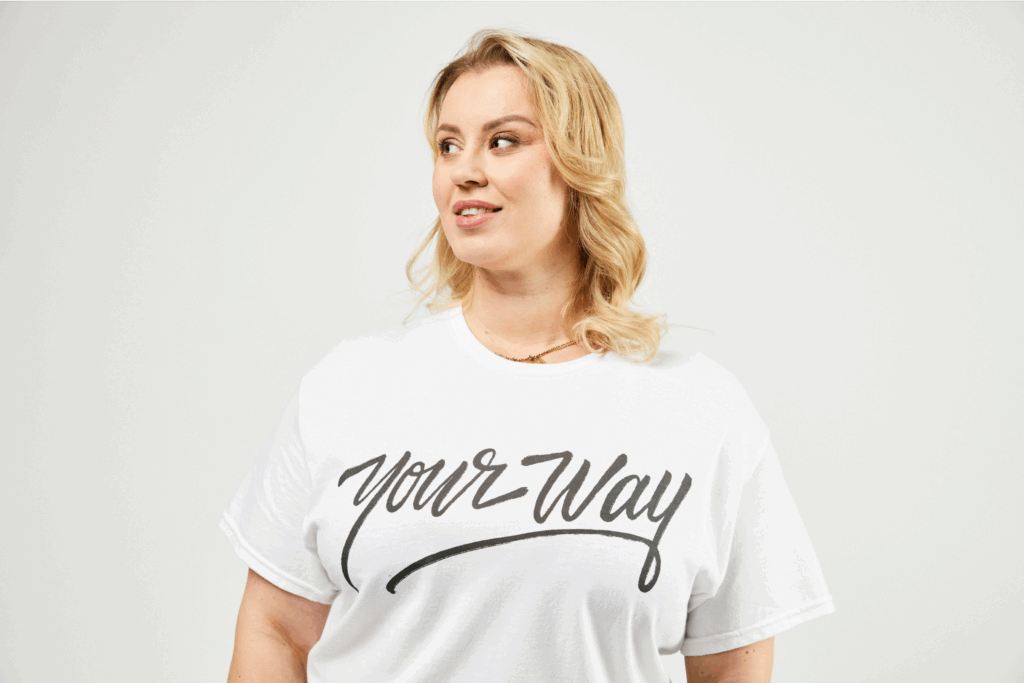Custom products, global reach
With over 96 million active buyers, Etsy is a great place to sell handmade goods, vintage items, craft supplies, and print-on-demand products.
This guide will explain how to start an Etsy shop and build a thriving small business online.
Not sure how much effort it takes? We’ll cover market research, product selection, Etsy payments, and search engine optimization so you can start selling in no time.
This post may contain affiliate links, which means we may earn a commission if you make a purchase through those links. This comes at no additional cost to you.
Key takeaways
- Start with prep like niche and product selection, then optimize your listings to help your Etsy shop stand out.
- Note Etsy fees to stay profitable. Check transaction fees, listing fees, and payment processing fees.
- Leverage Etsy’s tools, policies, and advertising to build trust and drive sales.
- Learn how to start an Etsy shop with no money with Printify. Create and sell customizable, print-on-demand products effortlessly.
Prep step 1: Research the market
Expert tip
“Anyone learning how to start an Etsy shop should do lots of research before creating products and launching their store.
They should understand their ideal customer and validate that there is demand for their products by doing trend and keyword research.
Also, there is so much content available online through YouTube videos, blogs, podcasts, and webinars that provide detailed information on how to start an Etsy shop — they should be sure to take advantage of those resources.
Taking time to learn from experts each step of the way will help new sellers avoid common mistakes as they begin their business.”
Megan Doleweerd, Etsy Expert
Before you learn how to open a shop on Etsy, analyze which products are most profitable and identify gaps in the market.
Strategically position your store to attract and retain customers by doing the following:
- Focus on a specific target market niche. Research the demographics, interests, and product preferences of your potential customers.
- Use keyword research tools like eRank to identify popular search terms. Explore bestselling products through the Etsy search bar.
- Look at favorited items and read user reviews to understand customer preferences and identify areas for improvement.
- Don’t mimic the competition, but provide additional value based on customer needs and your unique selling proposition.
Prep step 2: Decide what to sell on Etsy

Starting your own Etsy shop begins with a simple yet crucial question – what are you going to sell?
Look to the market for inspiration
In the Etsy search bar, type in trending or popular and see what people are looking for.
Pinpoint specific terms related to your niche. This helps you identify demand and find opportunities to stand out.
Exploring products you’d love to buy yourself is also beneficial to guide you toward product ideas that will resonate with others.
What’s selling and why
- Print-on-demand products. Custom tote bags, pencil cases, and zipper wallets are favorites for practicality.
- Home and organization. Drawer organizers, kitchen labels, and handmade shelving are popular to keep spaces tidy.
- Self-care and wellness. Candles, consumer products, and bath bombs make wonderful gifts.
- Personalized and custom items. Enamel pins, stickers, and customized jewelry shine as unique keepsakes.
- Eco-friendly and sustainable goodies. Items made from sustainable fabrics like bamboo, linen, or recycled materials appeal to eco-conscious buyers.
How to create your products
Now that you have an idea of what to sell, there are three main ways to create products for your Etsy store:
- If you have a talent for crafting, consider making products yourself. You’ll be in charge of producing and shipping these items to your customers.
- Buy products in bulk from third parties and resell them on Etsy for a profit. Note that you’ll need space for inventory.
- Connect your Etsy store to Printify and let us fulfill your orders and ship products directly to your customers. It’s the easiest way to sell print-on-demand items like custom apparel and accessories.
Sign up with Printify for automated order fulfillment and choose your next bestsellers from more than 1,300 customizable products in our Product Catalog.
Become an Etsy seller today!
Expert tip
“Some people believe that building a successful Etsy POD business is low-effort and extremely passive.
This is not true — if you want to be successful on Etsy, it’s going to take a lot of time and energy.
You’ll need to do tons of research, publish lots of products, provide a great customer experience, and be consistently active in your shop.
Don’t start an Etsy business if you aren’t ready to hustle!”
Megan Doleweerd, Etsy Expert
Prep step 3: Create high-quality images
Since customers can’t examine products from an Etsy shop as they would in a brick-and-mortar store, high-quality photos make all the difference.
90% of Etsy shoppers reveal that the quality of photos is either “extremely important” or “very important” when making a purchase decision.
Etsy sellers can use their phones to take photos or invest in a decent camera. If you’re selling with Printify, use our Product Creator to generate realistic product mockups for your Etsy listings.
Explore our guide on how to take product photos for Etsy and learn expert advice on creating photos that sell.
Prep step 4: Build an effective SEO marketing strategy
Expert tip
“Merchants should use tools such as eRank or Marmalead to complete keyword research. It’s important that they select for their listings keywords that have a high search volume and low competition.
Sellers should be sure to include keywords in their titles, descriptions, and tags. Variety is also important when it comes to Etsy SEO — merchants should avoid using the same keyword too many times.”
Megan Doleweerd, Etsy Expert
Search engine optimization improves your shop’s ranking on both Etsy and search engines like Google.
Optimize your store and product listings to maximize your online presence and grow your small business successfully. The table below provides an overview of how different SEO elements impact your store’s visibility.
| Feature | Etsy SEO | Google SEO |
|---|---|---|
| Relevancy | Tags, titles, and descriptions | Keywords in listings and pages |
| Listing quality | Clicks, views, favorites, purchases | Metadata and user engagement |
| Recency | Adding new listings | Regular content updates |
| Customer experience | Reviews, policies, About section | Clear shop policies and brand storytelling |
| Keywords | Tags and attributes for Etsy’s algorithm | Strategic keywords for search engines |
| Visuals | High-quality images and videos for product appeal | Clear visuals enhance rankings and engagement |
| Metadata optimization | n/a | Optimized titles and descriptions |
| Shop personalization | Shopper habits personalize search results | Search history personalizes Google results |
| Shipping services | Free shipping prioritized | Transparent shipping price details |
Etsy SEO
It’s important to understand Etsy SEO and how the platform’s algorithm determines the placement of your listings.
- Relevancy. How well your tags, titles, descriptions, categories, and attributes match the search.
- Listing quality score. The higher your score, the higher your listings will appear in search results. It’s based on factors like clicks, views, favorites, and purchases.
- Recency. New Etsy listings receive a temporary boost. If they perform well, they receive a higher quality score. Don’t renew listings, but optimize them.
- Customer and market experience score. This score increases with good reviews, a shop policy, and an About section. Issues like intellectual property infringement lower your score.
- Delivery services. Etsy prioritizes free or low-cost shipping in the US, so consider incorporating shipping costs in your product price.
- Translations. Etsy automatically translates your shop and listings to customers’ local language, but you can add your own to improve rankings.
- Shopper habits. Etsy personalizes search results for each user based on customer behavior, history, and favorited listings.
Google SEO
To drive traffic to your store and increase conversions, optimize your Etsy shop for search engines.
So, how do you improve your visibility on Google?
- Add a shop title and description. Briefly describe your business and the items you sell. Share your story, experience, and creative processes.
- Add visuals. Upload up to five images and a video in your store’s About section to showcase your brand to potential customers.
- Add shop policies. Add all the details on shipping, payment options, returns, and exchanges.
- Use relevant keywords. Choose phrases that potential customers will likely use when searching for products like yours. Add them throughout your shop page and product listings.
- Optimize your metadata. Make sure that your titles and descriptions meet the necessary character count. Keep it between 50-60 characters (or approximately 580 pixels) for titles and 50-160 characters (or roughly 920 pixels) for descriptions.
- Add high-quality images and videos. Capture the unique features, colors, and texture of your products from various angles and close-up shots.
Tools for Etsy and Google SEO
Use these SEO tools for keyword research, tracking, and analysis:
- Semrush. The free plan lets you track ten keywords, manage one project, and gives ten analytic reports per day. Paid plans start from $139.95/month or $117.33/month when paid annually.
- Ahrefs. Offers several free tools, including a Free Keyword Generator and backlink checker. Paid plans start from $129/month.
Other tools offer Etsy integration, providing insights on SEO, keyword research and monitoring, market prices, or competitor analysis:
- eRank. Freemium with paid plans starting at $5.99/month.
- Seller Way. Freemium with premium plans from $8.33/month paid yearly.
- Marmalead. Membership costs $19/month or $16/month paid annually.
- Sale Samurai. Three-day free trial. Payments of $9.99/month or $99.99/year.
After fine-tuning your store and product listings, consider enlisting the help of Etsy shop critiques to receive valuable peer reviews.
Watch our video for insights on optimizing your store to learn more.
Step 1: Sign up on Etsy
To start setting up an Etsy shop, click Sign in to use an existing account or select Register.
Enter your name, email, and password, and confirm your registration via the link in your inbox.
Step 2: Create a shop
Now, let’s begin the process of how to set up an Etsy store.
Go to the drop-down menu in the upper-right corner and select Sell on Etsy to create an Etsy Seller account. Find information on Etsy’s fees, tools, support, stories, and an FAQ.
Click on Get Started at the top of the page or Open Your Etsy Shop. Review and agree to Etsy’s policies and terms of use and answer additional questions, like reasons for launching your store.
Step 3: Adjust your Etsy shop preferences
Fill out all of the required fields:
- Shop language. Choose carefully since you can’t change it after launching your store.
- Shop country. Select your store’s location and where you pay taxes.
- Shop currency. Etsy will charge a 2.5% conversion fee if your bank account’s currency differs from your shop’s. The platform also automatically displays prices in your customer’s local currency.
Click Save and Continue.
Step 4: Name your Etsy store

Your store name must be four to 20 characters without special symbols, spaces, or accented letters.
Depending on your branding and niche, this can be your own name, a phrase reflecting your product selection, or something more abstract.
- Make it clear. The name should be easy to pronounce and spell.
- Use a focus keyword. Help target customers find your store more easily by using a high-ranking keyword in your shop name.
- Research. See if another business already uses the name or if it has any trademarks to avoid legal issues.
- Check cross-platform availability. Verify that your store name is available across online platforms, social channels, and domain sites like Namecheap.
- Use online tools. Try business name generators like Namelix to discover unique and catchy store names.
Trademark your business name to safeguard your unique brand.
Step 5: Stock your shop
In this step, you’ll create your first product listing. You can’t skip this, and Etsy will charge a $0.20 listing fee.
Add photos and a video
Upload up to ten product photos and follow Etsy guidelines for proportions and sizes. Place the best pictures first to capture attention, and use keywords in the alt-text.
There’s also an option to add a video of up to 100MB. Show the product unboxing and highlight its features and unique selling points.
Fill in the listing details
Optimize your product listing by filling out all the important information:
- Title. Use catchy titles and place the most relevant keywords first to improve visibility.
- Category. Search relevant keywords to find the right category for your product. Etsy will include all nested categories, making it easily discoverable.
- Description. Make your description easy to read with short paragraphs and bullet points. Insert long-tail keywords to enhance search visibility.
- Add tags. Fill all 13 tags per listing with keywords describing core product characteristics. Don’t worry about translations or plurals – Etsy handles these.
- Inventory and pricing. Set a price for your item and specify the available quantity for sale. Use our Etsy calculator to simplify your profit planning.
Follow our guides to learn about Etsy taxes and how to price a product to drive up your Etsy sales.
Adjust shipping prices
Give your potential buyers a clear idea of delivery times and costs. Create a shipping profile and add it to your product listings.
Here’s what you should include:
- Specify how much time you need to prepare an order and hand it to a delivery carrier.
- Outline fixed shipping costs or let Etsy determine prices by choosing calculated shipping and specifying the item’s weight and size.
- Consider offering free shipping or upgrades for express and discounted delivery when buyers purchase multiple items.
Use Printify
For print-on-demand products, use the Printify integration to simplify fulfillment when selling on Etsy.
Easily create listings by choosing from over 1,300 items in our Product Catalog, making designs using our Product Creator, and selecting the best product mockups.
Your custom products, including photos, titles, and descriptions, will sync to Etsy as draft listings. Simply adjust the final listing details before publishing.
Learn how to sell on Etsy with Printify.
Publish amazing products to your Etsy storefront today!
Step 6: Adjust payment options, billing, and security

Set up a bank account, provide personal documents, and enroll in Etsy Payments during the registration process. Follow these steps carefully to avoid an account block or ban from the marketplace.
Do you need a business license to sell on Etsy? Check our blog post to find out.
Add bank account
Open a new Etsy shop as an individual or business seller, fill in your personal information, and register a bank account to receive payments.
Make sure that the payment account belongs to the shop owner and that the registered name matches the one in your Etsy account.
If you’re a seller in the US, you’ll need to verify your bank account details through a third-party service called Plaid.
Enable Etsy Payments
The platform will automatically enroll you for Etsy Payments if it is available in your country.
Etsy Payments lets customers pay with debit cards and other gateways, including Etsy gift cards, Google Pay, Apple Pay, PayPal, iDEAL, and Sofort. These international payment methods make it easy for customers worldwide to purchase your products.
Choose a form of payment
Add your credit or debit card and billing address and select the frequency of payouts – monthly, biweekly, weekly, or every day. Note that some regions have a minimum requirement for daily deposits.
Keep in mind that Etsy charges listing fees – the first one is due at the start of the next calendar month.
There are also Etsy payment processing fees, which vary by country and cover credit card purchases and other payment methods.
Verify your ID
Complete your registration by uploading a government-issued ID, like a driver’s license or a passport.
Keep your Etsy store safe
Enable two-factor authentication so you’re the only one who can access your Etsy account.
If you select SMS or phone authentication, enter your phone number to receive the registration code. Alternatively, download and use Google Authenticator.
Once that’s done, click Open your shop.
Step 7: Review, customize, and launch your store
At this stage, it’s time to fine-tune aspects from the initial setup, infuse personality into your shop, and provide more insights into your small business.
Craft a personal bio and shop story
Navigate to Shop Manager → Sales Channels on your Etsy account and select the pencil icon next to your shop name.
- Shop members. Add a personal touch by including a picture and writing a brief bio. This helps customers connect with the faces behind the brand.
- Story. Share your journey as an Etsy seller. Include a shop announcement, headline, video, photos, and links to your your website, social media, or blog.
Outline shop policies
Clear store policies establish transparency and cultivate a mutual understanding between Etsy sellers and buyers.
It helps you provide excellent customer service and build trust with your audience.
Etsy provides fixed policies for estimated delivery updates and customs and import taxes. Shop owners can edit policies for order cancellations, returns, and exchanges, and write their own privacy policy.
Check out how to write the best Etsy shop policies.
Use social media
Expand your Etsy shop’s reach and connect with a broader audience through your social media pages.
Promote your products effectively using social media posts to drive customer purchases. Include a direct link to your Etsy shop to make it easy for potential customers to find you.
Collaborate with influencers, encourage audience engagement with user-generated content, and monitor results to refine your strategy for selling on Etsy.
Learn how to make money on Etsy, and check out our tips on how to grow your Etsy store.
Use Etsy Ads
Etsy’s built-in ad feature helps to strategically enhance your shop’s reach and drive traffic so you can score that first Etsy sale.
These ads run on Search, Category, and Market pages exclusively on Etsy.com and the Etsy app.
Set your daily budget, starting at $1, and Etsy Ads will automatically optimize your bid for maximum exposure.
Keep a close eye on your performance through the Etsy Ads dashboard and improve your listings to achieve optimal results.
List production partners
If you’re selling custom products with POD, you’ll need to specify that they are made with production assistance.
Head to Shop Manager → Settings → Production partners, then click Add a new production partner. Be sure to include the following information:
- Production partner – Printify.
- Location – United States of America.
- About production partner – Order fulfillment platform.
You’ll also need to clearly describe the role of your partner in producing your products – such as printing and shipping items directly to customers.
Start your Etsy print-on-demand business today!
FAQ
You’ll pay a $0.20 listing fee and a 6.5% transaction fee on the total order amount, which includes the listing price, shipping, and gift wrapping (if applicable).
This charge will be due on the first day of the next calendar month and auto-renews after listings expire.
Absolutely. Etsy is a unique online marketplace that successfully connects sellers and buyers worldwide. Even with listing and transaction fees, a small business owner can transform their side-hustle to a thriving income source.
If you want to explore other platforms, check out these Etsy alternatives.
That depends on the niche and market interest, as well as the amount of effort and time put into the store.
A successful Etsy shop earns around $44,380 annually, while some top sellers make more than that every month.
Top-selling categories include jewelry, craft supplies, party items, home decor, and customizable clothing like t-shirts and babywear.
Etsy buyers are mainly women, young adults, craft enthusiasts, parents, and pet owners seeking unique, personalized, or handmade items.
How to start an Etsy store: Final thoughts
The steps to open an Etsy shop is fairly simple, but taking it to the next level requires planning and dedicated effort.
Follow this guide and grow your customer base using strategies like listing optimization, social media, and leveraging Etsy’s advertising services.
Now that you know how to set up an Etsy shop, enhance your product offerings and simplify business operations by partnering with Printify. Create a thriving online store without the hassle of inventory.
Etsy is always evolving and adding new resources to the Seller Handbook. Follow our blog to stay in the loop and learn more on how to open an Etsy store and make it grow.
























